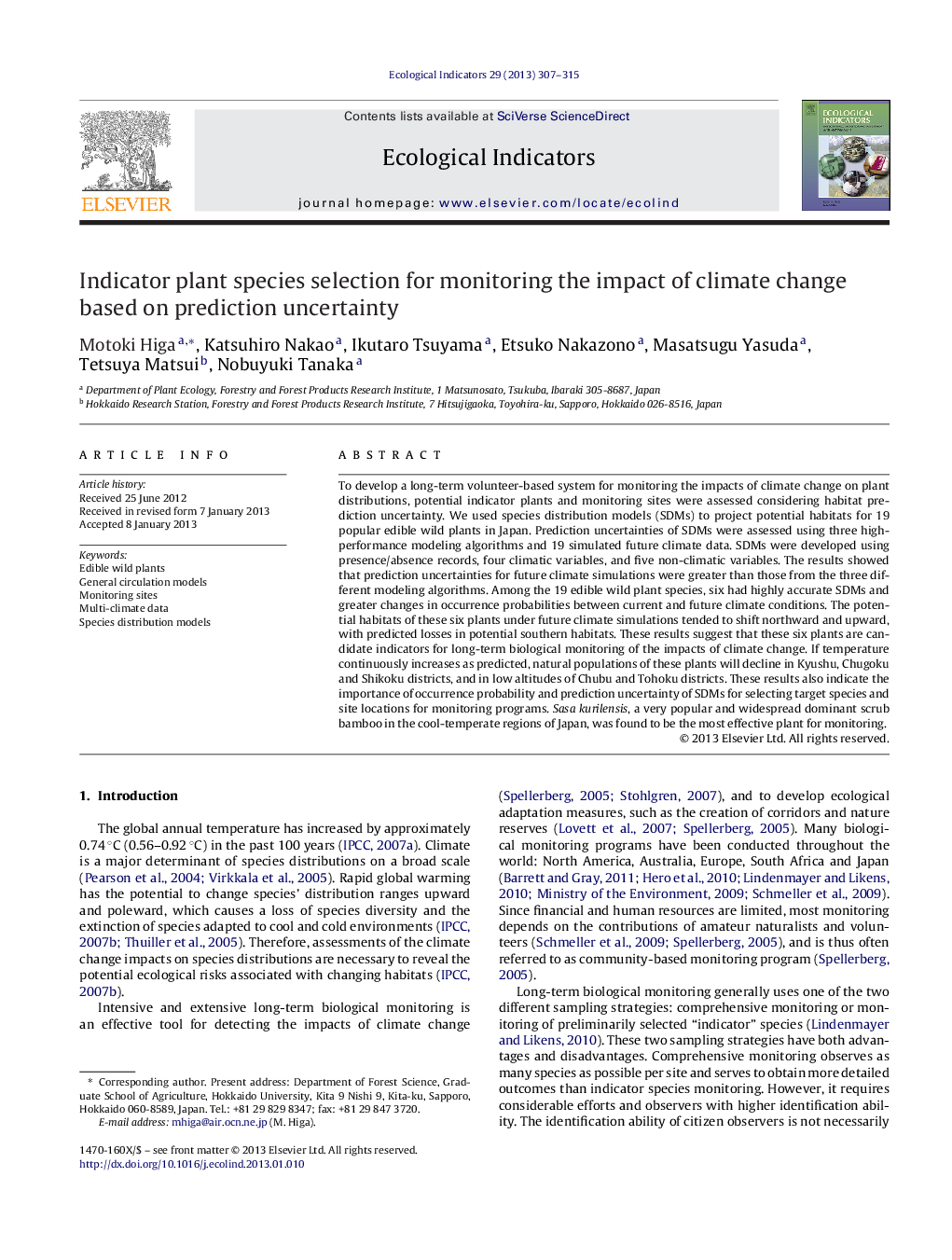| کد مقاله | کد نشریه | سال انتشار | مقاله انگلیسی | نسخه تمام متن |
|---|---|---|---|---|
| 4373487 | 1617171 | 2013 | 9 صفحه PDF | دانلود رایگان |

To develop a long-term volunteer-based system for monitoring the impacts of climate change on plant distributions, potential indicator plants and monitoring sites were assessed considering habitat prediction uncertainty. We used species distribution models (SDMs) to project potential habitats for 19 popular edible wild plants in Japan. Prediction uncertainties of SDMs were assessed using three high-performance modeling algorithms and 19 simulated future climate data. SDMs were developed using presence/absence records, four climatic variables, and five non-climatic variables. The results showed that prediction uncertainties for future climate simulations were greater than those from the three different modeling algorithms. Among the 19 edible wild plant species, six had highly accurate SDMs and greater changes in occurrence probabilities between current and future climate conditions. The potential habitats of these six plants under future climate simulations tended to shift northward and upward, with predicted losses in potential southern habitats. These results suggest that these six plants are candidate indicators for long-term biological monitoring of the impacts of climate change. If temperature continuously increases as predicted, natural populations of these plants will decline in Kyushu, Chugoku and Shikoku districts, and in low altitudes of Chubu and Tohoku districts. These results also indicate the importance of occurrence probability and prediction uncertainty of SDMs for selecting target species and site locations for monitoring programs. Sasa kurilensis, a very popular and widespread dominant scrub bamboo in the cool-temperate regions of Japan, was found to be the most effective plant for monitoring.
► Indicators of climate change monitoring were assessed by prediction uncertainty.
► Popular edible wild plants were used to develop volunteer-based monitoring system.
► Future climate data caused more prediction uncertainties than modeling algorithms.
► Prediction uncertainty and climate sensitivity are useful for indicator selection.
► Edible wild plants are candidate indicators for climate change impact monitoring.
Journal: Ecological Indicators - Volume 29, June 2013, Pages 307–315